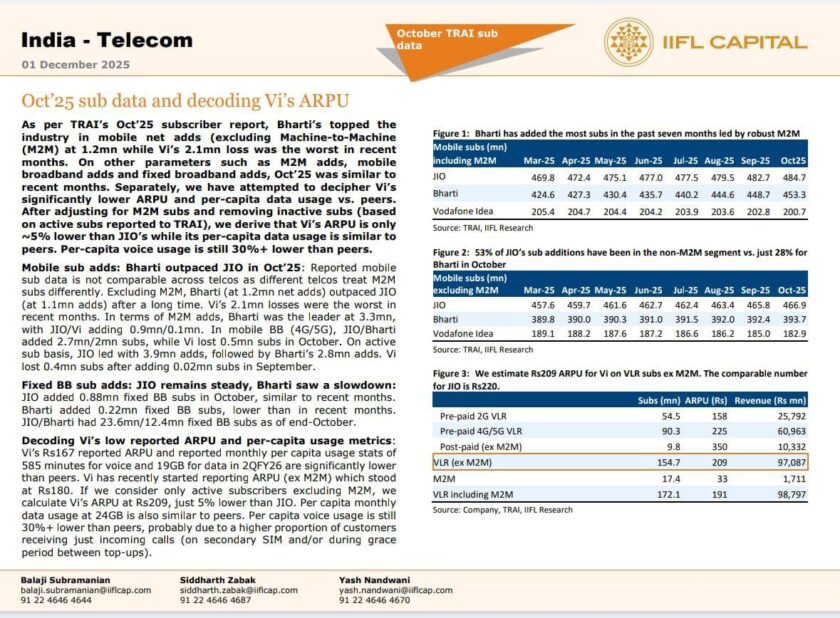Bengaluru: The global auto industry is hurtling into a future more technologically advanced than anything the 20th century could have imagined. A fusion of clean energy, artificial intelligence, cutting-edge manufacturing, and new ownership models is redefining not just the car—but the very idea of mobility.
From electric propulsion systems to AI-powered driving, from AR dashboards to blockchain-backed car-sharing, this is a look under the hood of tomorrow’s automotive revolution. This is not just evolution—it is reinvention, with software, sustainability, and data as the new engines of progress.
Electric Power: Rewiring the Industry
Electric vehicles (EVs) have shifted from a sustainability token to a market staple. Thanks to breakthroughs in battery chemistry, modern EVs offer over 400 miles of range, with solid-state batteries—capable of storing more energy and charging in minutes—on the horizon.
In 2024, global EV sales crossed 14 million units, driven by falling lithium-ion costs, supportive policies in Europe, China, and the U.S., and automakers racing to electrify.
“The future of mobility is electric—and it’s happening faster than anyone anticipated,” said Elon Musk, CEO of Tesla.
Startups like Lucid Motors and BYD are innovating alongside legacy brands like Ford and Volkswagen. VW has committed $193 billion toward electrification by 2028.
“We are not just transforming a car brand—we’re redefining mobility itself,” said Herbert Diess, former CEO of Volkswagen.
However, infrastructure must keep pace. EVs still face charging anxiety. Despite growth, only 200,000 public fast chargers exist globally.
Autonomous Driving: Hands Off the Wheel
Self-driving cars are no longer hypothetical. Millions of real-world miles have been clocked by players like Waymo, Cruise, and Tesla, with varying degrees of driver intervention. Level 2 and Level 3 autonomy—where drivers must remain alert—are now available in many premium models.
“Autonomy will become mainstream. It’s not a question of if, but when,” said John Krafcik, former CEO of Waymo.
Tesla’s Full Self-Driving suite, still in beta, showcases neural network learning in action, while Mercedes became the first automaker to receive Level 3 autonomy certification in Germany and select U.S. states.
Yet Level 5 autonomy—where vehicles operate without human input in all conditions—remains technically and ethically complex.
“The challenge is not just the technology—it’s regulatory harmonization and public trust,” said Jim Hackett, former Ford CEO.
Connected Cars: The Internet on Wheels
Today’s vehicles are intelligent, constantly connected machines that interact with everything from GPS satellites to traffic lights. With 5G and vehicle-to-everything (V2X) communication, cars can now talk to other vehicles and infrastructure in real time.
“Vehicles are becoming smartphones on wheels,” said Christoph Grote, SVP of Electronics at BMW.
“Connectivity will define the next generation of safety and convenience.”
AI assistants, like Mercedes’ MBUX or BMW’s iDrive 9, are revolutionizing infotainment. Startups like NIO are going further—offering in-car AR interfaces and voice-based command control.
But with connectivity comes risk.
“The more software you have, the more vigilant you must be about cybersecurity,” said Mary Barra, CEO of General Motors.
Cyber attacks on vehicle networks rose by 22% last year, with threats ranging from ransomware to remotely hijacked control systems.
Smart Manufacturing: Building the Future
Factories have evolved from metal-stamping monoliths into digitized ecosystems of robots, AI, and 3D printers. In Germany, BMW’s Leipzig plant uses “cobots”—collaborative robots—to speed up production while minimizing errors.
“We are leveraging digital twins and real-time data to reinvent manufacturing,” said Oliver Zipse, CEO of BMW Group.
3D printing, or additive manufacturing, is being used to fabricate lightweight parts, cut waste, and accelerate prototyping. Volkswagen uses AI to simulate and test factory logistics before even building a production line.
Assembly times have dropped by up to 30%, reducing costs and boosting mass customization.
Sustainable Materials: Greening the Ride
Sustainability goes beyond emissions. Today’s carmakers are rethinking what their vehicles are made of. Vegan leather, recycled plastic, plant-based foams, and reclaimed aluminum are becoming standard in greener models.
Ford’s Mustang Mach-E uses seat materials made from recycled PET bottles. Mercedes plans carbon-neutral production by 2039, while startup Aptera incorporates solar panels to extend range up to 40 miles daily.
“Sustainability must be baked into every step—from design to delivery,” said Linda Zhang, Chief Engineer of the Ford F-150 Lightning.
These innovations reduce environmental damage while also reducing weight—improving range and efficiency.
Software-Defined Vehicles: The New Core
Gone are the days when horsepower was everything. Today’s cars are defined by lines of code more than lines of design. Tesla pioneered the software-first approach, with over-the-air (OTA) updates that upgrade vehicle performance remotely.

“Software is the heartbeat of modern mobility,” said Jensen Huang, CEO of NVIDIA.
Rivian’s 2024 software update added 10% more range to its electric trucks. BMW now offers subscription-based heated seats. Centralized computer architectures, like NVIDIA’s DRIVE platform, control everything from steering to entertainment.
“We’re shifting from one-time sales to lifetime relationships through continuous software experiences,” added Thomas Ulbrich, VW Board Member.
Hydrogen Horizons: The Next Fuel Frontier
Hydrogen-powered vehicles, particularly fuel cell electric vehicles (FCEVs), are gaining attention, especially for commercial and long-haul applications. Toyota’s Mirai and Hyundai’s Nexo can deliver over 400 miles per fill-up in under 5 minutes.
“For heavy-duty transport, hydrogen offers the energy density and range batteries cannot,” said Jose Muñoz, COO of Hyundai.
Green hydrogen—produced using renewable energy—is becoming cheaper and more viable. But infrastructure lags. There were only 600 operational hydrogen refueling stations globally as of 2024.
“Hydrogen will be part of the mix, but only if we invest in a viable fueling ecosystem,” said Akio Toyoda, Chairman of Toyota Motor Corporation.
Mobility as a Service: Redefining Ownership
Cars are becoming services, not possessions. With ride-sharing, car subscriptions, and autonomous fleets on the rise, the idea of “owning” a car is becoming optional.
“The next decade will be more about services than cars,” said Dara Khosrowshahi, CEO of Uber.
GM’s Cruise, Amazon’s Zoox, and others are testing autonomous taxi fleets in cities, while peer-to-peer platforms like Turo let individuals rent out their vehicles.
Blockchain is also entering the scene, promising verified vehicle histories and decentralized leasing models.
Shared mobility is projected to become a $1.5 trillion market by 2030.
Augmented Reality: Enhancing the Drive
AR is redefining the driver experience. The Audi Q4 e-tron uses AR to overlay navigation and hazard alerts on the windshield. Envisics, a UK-based startup, is building 3D holographic interfaces that could become standard in luxury models by 2027.
“AR helps us visualize the invisible,” said Michael Schwekutsch, VP of Engineering at Apple’s Special Projects Group.
Ford’s design teams use AR headsets to collaborate virtually and reduce development cycles by 20%. AR also has potential in safety—displaying live hazard alerts, lane shifts, and speed signs in real time.
The Role of Big Data and Analytics
Cars now generate more data per hour than a commercial airplane. This data powers everything from predictive maintenance and route optimization to targeted in-car advertising.
“Vehicles today generate terabytes of data—what we do with it will define the future of driving,” said Mark Fields, former Ford CEO.
Bosch’s predictive systems alert drivers to potential part failures before they occur, reducing breakdowns and lowering repair costs by 15%. UPS uses AI to route delivery trucks more efficiently, cutting fuel use by 10%.
But privacy concerns persist. Automakers face regulatory scrutiny from GDPR and CCPA frameworks and are investing heavily in data encryption and ethical compliance.
Challenges on the Horizon
Despite astonishing progress, the industry faces tough hurdles. The global shortage of semiconductor chips continues to delay production. Tesla, for example, cut output by 5% in Q1 2025.
Autonomous driving is still only legal in limited jurisdictions—Level 4 systems are approved in just 10 U.S. states. And EV charging infrastructure still lags behind demand in many regions.
“We’re in a race against time to scale infrastructure, secure supply chains, and build trust in autonomy,” said Jim Farley, CEO of Ford.
Ethical issues—like who’s responsible in an AI-controlled crash—remain unresolved. Meanwhile, over 300 vehicle cyberattacks were reported in 2024 alone, highlighting the urgent need for digital security.
The Future of Mobility
The automobile is no longer just a machine—it is becoming a platform. One that’s electric, autonomous, data-rich, and sustainable. From the drawing board to the dashboard, innovation is the new fuel.
“We’re standing on the edge of a mobility revolution that’s as profound as the invention of the automobile itself,” said Shailesh Chandra, MD of Tata Motors Passenger Vehicles.
As urbanization grows and climate concerns intensify, the global automotive industry is being challenged—and inspired—to adapt. Whether through electric innovation, shared mobility, or AI-led autonomy, the journey ahead is not just about getting from point A to B, but about reshaping the experience itself.
The road to tomorrow is open. The revolution is already in drive.





